How to Access Control Panel in Windows 10 (7 Ways)
I was really furious when Microsoft removed the Control Panel shortcut from the Windows 10 power user menu (Win + X) in the Creators Update. I used to make all my Windows tweaks through the Control Panel, and it was my go-to method for accessing the Control Panel.
However, after a bit of search and tinkering, I managed to find multiple ways to access the Control Panel in Windows 10. In fact, some of these methods are faster than the power user menu shortcut. So let’s take a look at the list below.
Read Also: 6 Ways to Access Windows 10 Boot Options Menu
1. Use the search fields
You can access Control Panel from most search fields in Windows 10, including the Settings search bar, Cortana search, and File explorer address bar.
All you need to do is to type Control Panel or just Control in any of these search bars and press Enter, and the Control Panel with open.

2. Use Run, Command Prompt or Powershell
Similar to the search fields, you can also access Control Panel from the Run dialog, Command Prompt or Powershell.
Simply press Windows + R keys to open the Run dialog and type cmd to open the Command Prompt. Similarly, you can type control in the Command Prompt or Powershell and press Enter to access the Control Panel.
Accessing Control Panel from Command Prompt or Powershell might seem a bit of extra work, but it’s a good option to remember if you frequently use these programs.
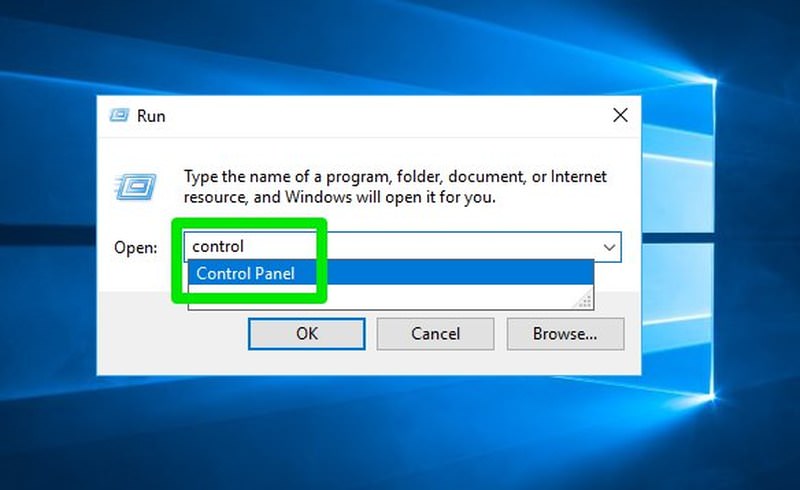
3. Through the Start Menu
In the Start Menu, you’ll find the Control Panel shortcut in the Apps section. Simply scroll down to the bottom and click on “Windows System” folder and you will find the Control Panel shortcut inside it.
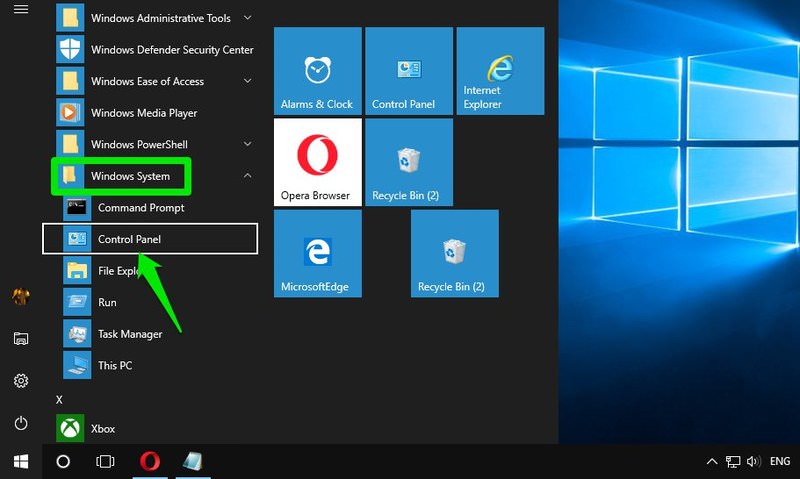
4. Pin Control Panel shortcut to Taskbar
If you frequently need to access the Control Panel, then you can pin it to the Taskbar for one-click access. Here is how to do it:
- Open the Control Panel using any method.
- Right-click on the Control Panel icon in the Taskbar and select Pin to taskbar. This will add a Control Panel shortcut to the Taskbar that you can access with just one click.
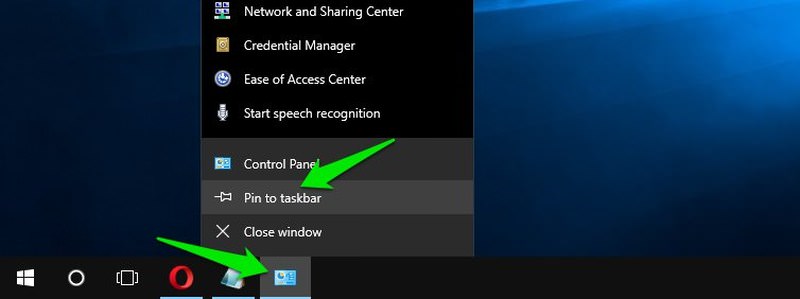
In case you want to unpin the shortcut later, then right click on the Control Panel icon again and select Unpin from taskbar.
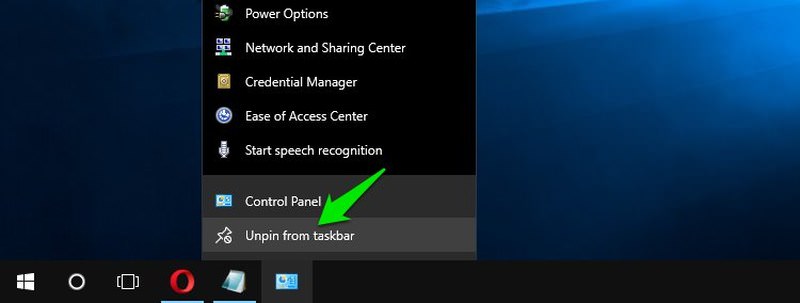
5. Pin Control Panel shortcut to Start Menu
If you don’t want to clutter your Taskbar with another shortcut, then you can also pin it to the Start Menu:
- Go to the Control Panel shortcut in the Start Menu and right-click on it.
- Here select Pin to start.

This will add Control Panel shortcut as a tile in the Start menu.

6. Create a Desktop shortcut
If you don’t mind another icon on the desktop, then the Control Panel desktop shortcut will surely make things easier. To do this, you can either enable the official Control Panel desktop icon from “Desktop icon settings”, or simply create a Control Panel shortcut.
I will go with the latter option, as it’s more customizable and we will be using it in our next method (method 7) as well.
- Right-click on an empty space on the desktop and go to New > Shortcut in the context menu.
- A wizard will open up. Here type “control.exe” in the text field and click Next.
- Now name it
Control Paneland click on Finish.
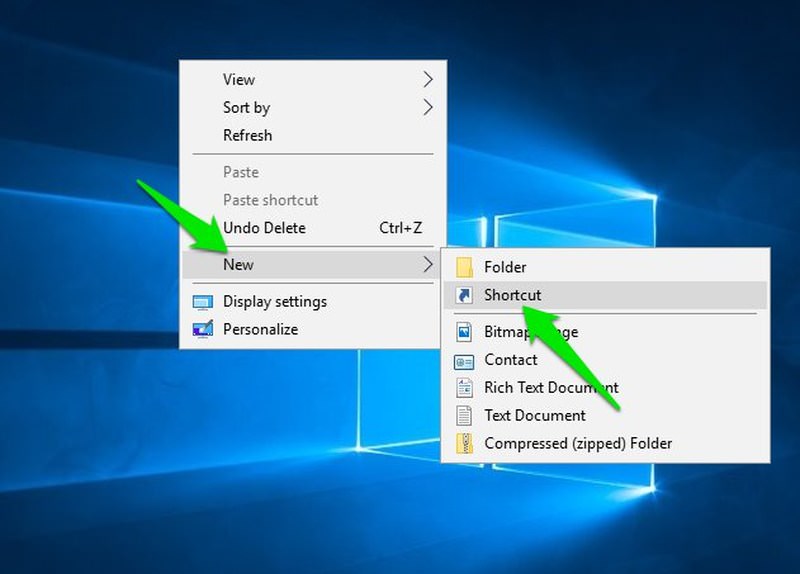
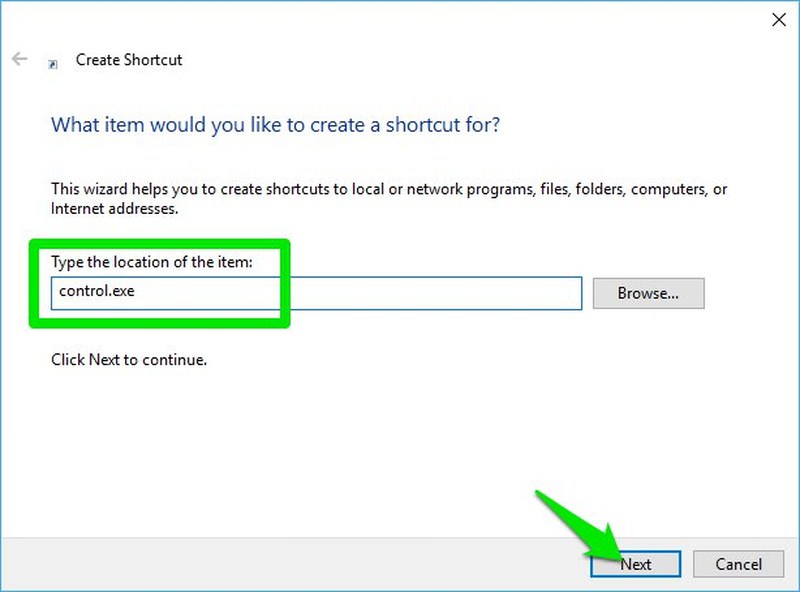
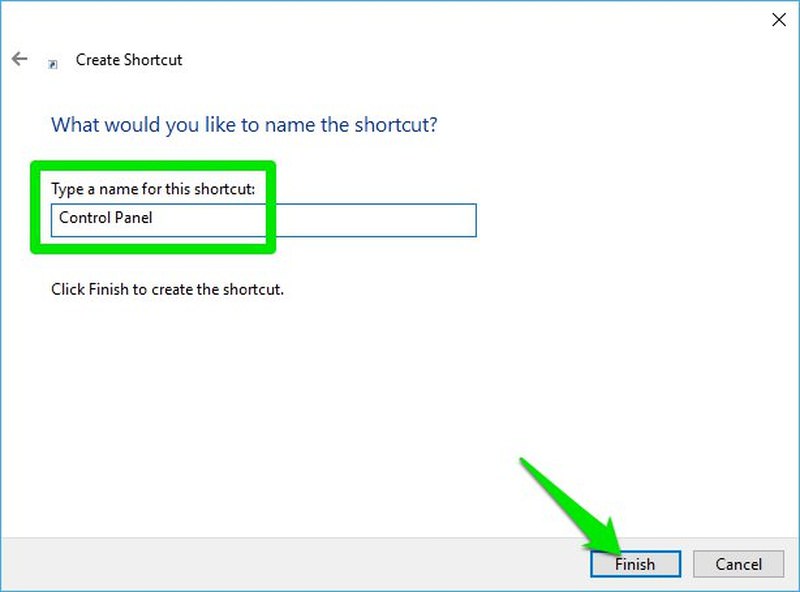
This will create a Control Panel shortcut on your desktop that you can open to access the Control Panel.
7. Create keyboard shortcut for Control Panel
A keyboard shortcut is the fastest and the easiest way access the Control Panel, but you’ll have to create a desktop shortcut first. Considering that you have already created a desktop shortcut using the above method, here’s how to set a keyboard shortcut:
- Right-click on the Control Panel desktop shortcut and click on Properties.
- Under the Security tab left-click inside the text field next to Shortcut key and press the shortcut key that you want to assign. For example, you can press C to create a keyboard shortcut using the letter C. Windows will automatically add Ctrl + Alt before it to create the full shortcut. Therefore, Ctrl + Alt + C will be the new shortcut.
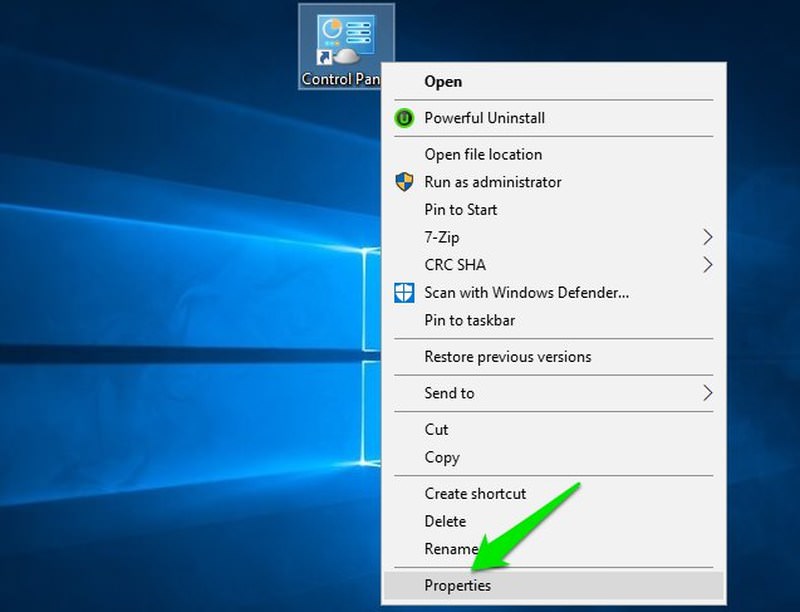
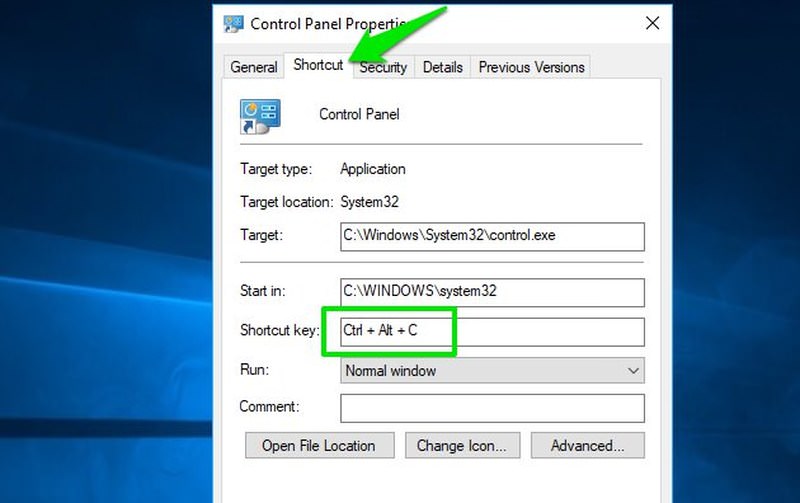
You can now press Ctrl + Alt + C together to open Control Panel at any time.
Read Also: 150+ Windows 10 Keyboard Shortcuts to Rocket Your Productivity
Ending thoughts
I have personally created a keyboard shortcut to open the Control Panel as I access the Control panel dozens of time a day. If you don’t need to access the Control Panel often, then the first 3 methods should do the trick.
I also recommend that you to try enabling God Mode in Windows. It lists all the Control Panel applets in a single interface. If you frequently mess around with Control Panel, then God Mode will surely help.